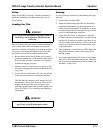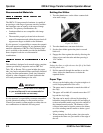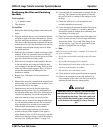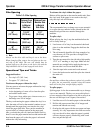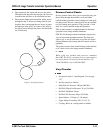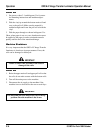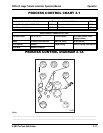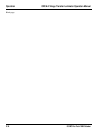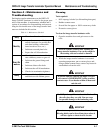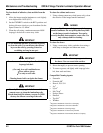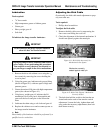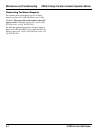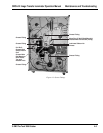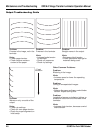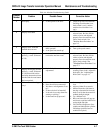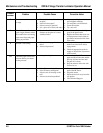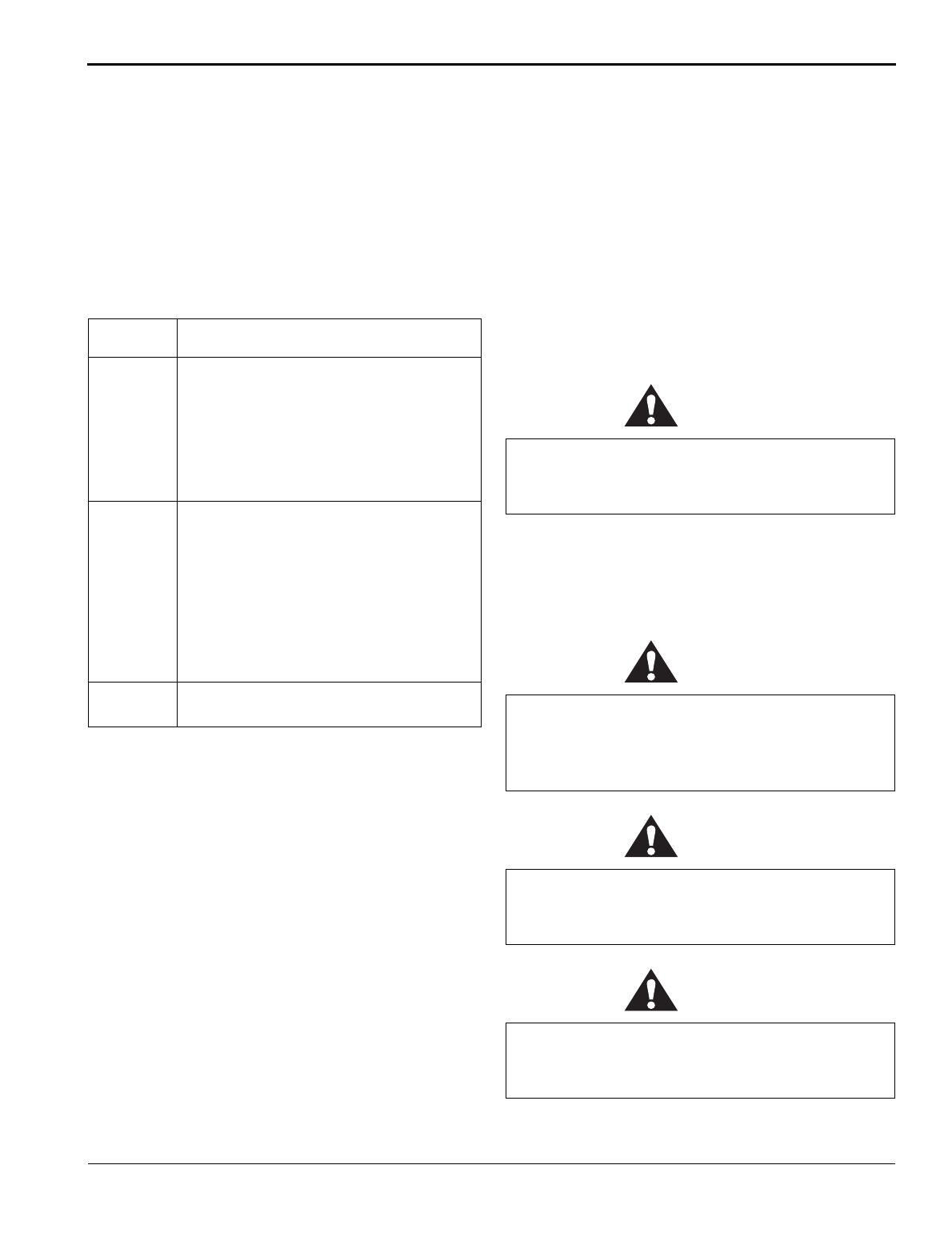
ORCA-IV Image Transfer Laminator Operation Manual
Maintenance and Troubleshooting
© GBC Pro-Tech 1998 October
4-1
6HFWLRQ0DLQWHQDQFHDQG
7URXEOHVKRRWLQJ
Performing regular maintenance on the ORCA-IV
Image Transfer Laminator is critical to the proper oper-
ation of the machine. A maintenance schedule and a
section of procedures for disassembling and reassem-
bling the serviceable areas of the image transfer lami-
nator are included in this section.
Table 4-3: Maintenance Schedule
&OHDQLQJ
Tools required:
• 80% isopropyl alcohol (or dishwashing detergent)
• Rubber cement eraser
• Several lint free paper or 100% cotton terry cloths
• Protective cotton gloves
To clean the image transfer laminator rolls:
1. Open the machine doors and gain access to the
rolls.
IMPORTANT
2. While the image transfer laminator is at normal
operating temperature, put on cotton gloves and,
using a rubber cement eraser, remove any heat acti-
vated adhesive from the rolls.
IMPORTANT
IMPORTANT
IMPORTANT
Daily
• Clean the rolls and machine
Monthly
• Inspect the area around the image
transfer laminator for possible haz-
ards (dust buildup, combustible
items stored too close, etc.)
• Lubricate core end plate bolts
• Inspect the roll lift mechanism
Every Six
Months
• Check the chain tension and lubri-
cate with heavy motor or gear oil.
• Lubricate the grease fittings and
chain
• Lubricate slitter collar bolts
• Lubricate the roll lift mechanism
• Check wire termination tightness
Yearly
• Disassemble the roll lift mechanism
and lubricate with lithium grease
Exercise extreme caution while cleaning the
image transfer laminator. You can be caught in
the turning rolls and crushed or burned.
If silicone adhesive contacts the upper or lower
roll, remove it IMMEDIATELY using a rubber
cement eraser. It can harden within an hour and
ruin the roll.
Do NOT pick or pull heat activated adhesive off
the rolls when they are cold. You can cause
irreparable damage to the laminating rolls.
Do not use compressed air to clean the machine.
Blowing debris can be forced into places where it
will later ignite or short electric circuits.



